
Impressionism was a 19th-century art movement characterized by relatively small, thin, yet visible brush strokes, open composition, emphasis on accurate depiction of light in its changing qualities, ordinary subject matter, unusual visual angles, and inclusion of movement as a crucial element of human perception and experience. Impressionism originated with a group of Paris-based artists whose independent exhibitions brought them to prominence during the 1870s and 1880s.

Jean-Auguste-Dominique Ingres was a French Neoclassical painter. Ingres was profoundly influenced by past artistic traditions and aspired to become the guardian of academic orthodoxy against the ascendant Romantic style. Although he considered himself a painter of history in the tradition of Nicolas Poussin and Jacques-Louis David, it is his portraits, both painted and drawn, that are recognized as his greatest legacy. His expressive distortions of form and space made him an important precursor of modern art, influencing Picasso, Matisse and other modernists.
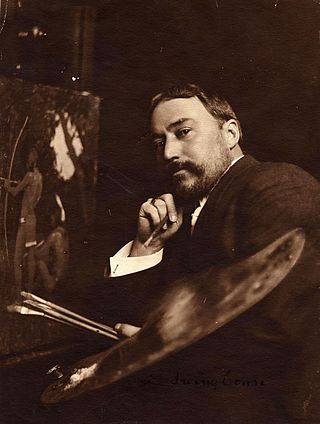
Eanger Irving Couse was an American artist and a founding member and first president of the Taos Society of Artists. Born and reared in Saginaw, Michigan, he went to New York City and Paris to study art. While spending summers in Taos, New Mexico, he began to make the paintings of Native Americans, New Mexico, and the American Southwest for which he is best known. He later settled full time in Taos.

Alfons Maria Mucha, known internationally as Alphonse Mucha, was a Czech painter, illustrator, and graphic artist, living in Paris during the Art Nouveau period, best known for his distinctly stylized and decorative theatrical posters, particularly those of Sarah Bernhardt. He produced illustrations, advertisements, decorative panels, as well as designs, which became among the best-known images of the period.

John Singer Sargent was an American expatriate artist, considered the "leading portrait painter of his generation" for his evocations of Edwardian-era luxury. He created roughly 900 oil paintings and more than 2,000 watercolors, as well as countless sketches and charcoal drawings. His oeuvre documents worldwide travel, from Venice to the Tyrol, Corfu, Spain, the Middle East, Montana, Maine, and Florida.
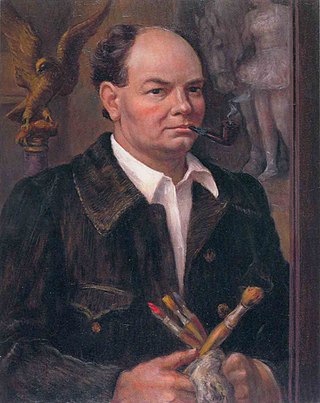
John Steuart Curry was an American painter whose career spanned the years from 1924 until his death. He was noted for his paintings depicting rural life in his home state, Kansas. Along with Thomas Hart Benton and Grant Wood, he was hailed as one of the three great painters of American Regionalism of the first half of the twentieth century. Curry's artistic production was varied, including paintings, book illustrations, prints, and posters.
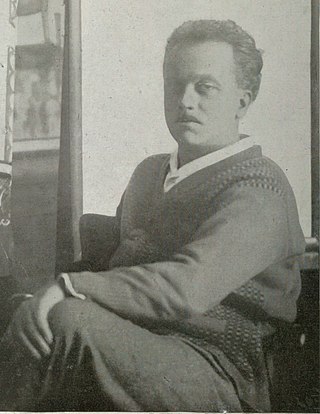
Raoul Dufy was a French Fauvist painter. He developed a colorful, decorative style that became fashionable for ceramics and textile designs, as well as decorative schemes for public buildings. He is noted for scenes of open-air social events. He was also a draftsman, printmaker, book illustrator, scenic designer, furniture designer and a planner of public spaces.
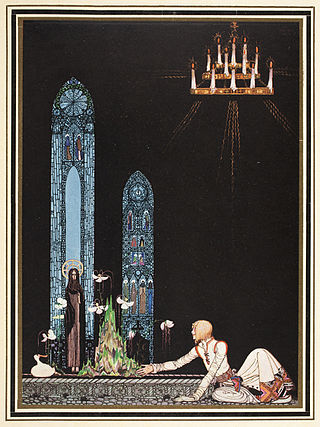
Kay Rasmus Nielsen was a Danish illustrator who was popular in the early 20th century, the Golden Age of Illustration which lasted from when Daniel Vierge and other pioneers developed printing technology to the point that drawings and paintings could be reproduced with reasonable facility. Nielsen is also known for his collaborations with Disney for whom he contributed many story sketches and illustrations, not least for Fantasia.

Julius Garibaldi Melchers was an American artist. He was one of the leading American proponents of naturalism. He won a 1932 Gold medal from the American Academy of Arts and Letters.
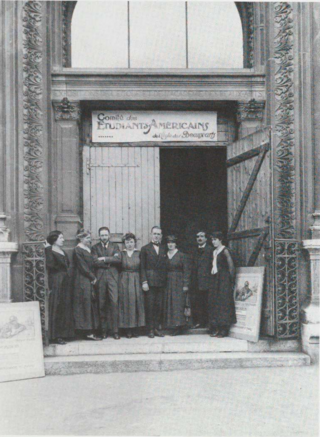
Patrick Henry Bruce was an American cubist painter.

Joseph Edward Southall RWS NEAC RBSA was an English painter associated with the Arts and Crafts movement.

Félix Édouard Vallotton was a Swiss and French painter and printmaker associated with the group of artists known as Les Nabis. He was an important figure in the development of the modern woodcut. He painted portraits, landscapes, nudes, still lifes, and other subjects in an unemotional, realistic style.

Otto Stark was an American Impressionist painter muralist, commercial artist, printmaker, and illustrator from Indianapolis, Indiana, who is best known as one of the five Hoosier Group artists. Stark's work clearly showed the influence of Impressionism, and he often featured children in his work. To provide a sufficient income for his family, Stark worked full time as supervisor of art at Emmerich Manual High School in Indianapolis from 1899 to his retirement in 1919, and as part-time art instructor on the faculty of the John Herron Art Institute from 1905 to 1919. Stark frequently exhibited his paintings at international, national, regional, and local exhibitions, including the Paris Salon of 1886 and 1887; the Five Hoosier Painters exhibition (1894) in Chicago, Illinois; the Trans-Mississippi Exposition (1898) in Omaha, Nebraska; the Louisiana Purchase Exposition (1904) in Saint Louis, Missouri; and international expositions (1910) in Buenos Aires, Argentina, and Santiago, Chile. He also supervised the Indiana exhibition at the Panama-Pacific International Exhibition (1915) in San Francisco, California. Stark remained an active artist and member of the Indianapolis arts community until his death in 1926.
Jared French was an American painter who specialized in the medium of egg tempera. He was one of the artists attributed to the style of art known as magic realism along with contemporaries George Tooker and Paul Cadmus.

James Taylor Ellyson was a former Confederate soldier, as well as Virginia lawyer and Democratic politician, who served in several positions in his native Richmond, Virginia and statewide.

Julien Binford was an American painter. He studied at the Art Institute of Chicago and then in France. Settling in Powhatan County, Virginia, he was known for his paintings of the rural population of his neighborhood as well as for his murals. During World War II (1944) he lived in New York City and painted views of the port during the war. These paintings were featured in Life magazine. In 1946 he was appointed professor of painting at Mary Washington College in Fredericksburg, Virginia, where he worked until his retirement in 1971.
Charles Cobelle, born Carl Edelman (1902–1994) was a modern French master of painting, lithography and a fine muralist, who was born in Alsace-Lorraine, France. He is considered the last link to the great tradition of the Open Line School of Paris.
Eliphalet Frazer Andrews, an American painter known primarily as a portraitist, established an art instruction curriculum at the behest of William Wilson Corcoran at his Corcoran School of Art, and served as its director, 1877–1902. He received many commissions to create both original portraits and copies of images of deceased famous Americans, which are displayed by federal, state, and local institutions. His art is housed at the Smithsonian American Art Museum, the Ohio State Capitol, and numerous paintings at The White House and the United States Capitol.

Louis Rivier was a Swiss painter, writer, and stained glass artist.

Edmund Archer (1904–1986) was an American artist best known for his portraits of African Americans. He was born in Richmond, Virginia, to parents who were both culturally and socially prominent in that city. Having taken an early interest in painting, he took art classes continually from childhood into his adult years. His long career included periods spent in Richmond, Paris, New York, and Washington, D.C. In addition to painting, he served as an assistant curator at the Whitney Museum of American Art and an instructor at the Corcoran School of Art. His portrait style tended toward a poster-like flatness early in his career and later toward a more traditional modeled style. He painted with a high degree of realism throughout his career and rarely experimented with any degree of abstraction. Galleries and museums gave him frequent exhibitions and both individual and institutional collectors provided him with income from sales. In 1938, a critic said he was then considered to be "one of the best of the young artists in the United States". A few months later, another critic credited his success to hard work: "Edmund Minor Archer has had advantages. His success story is no Horatio Alger tale. It is a story of an earnest and deeply talented artist who has worked and studied in humility and devotion, and has early reached the top, hard step by hard step".

















